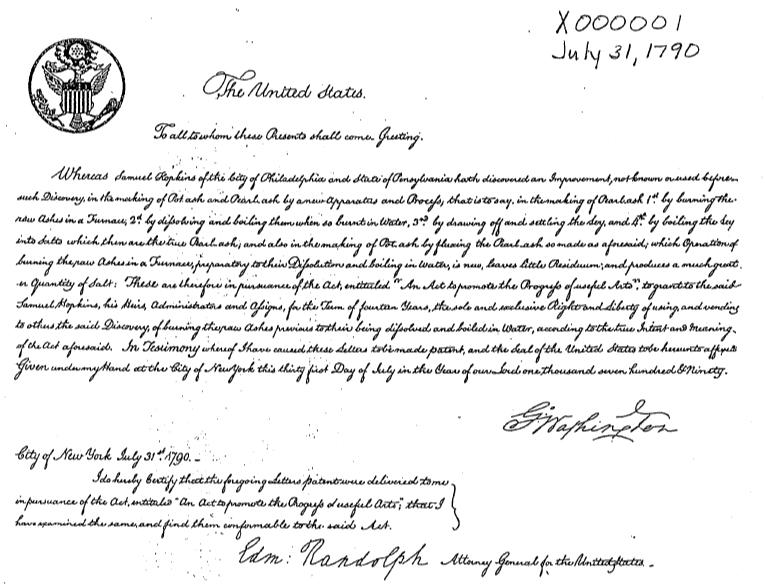On July 31, 1790, Samuel Hopkins was granted the first U.S. patent when he created a better way to make potash, a versatile chemical used in American exports.
Potash is an impure form of potassium carbonate, mixed with other potassium salts. Often referred to as “black gold,” it was vital to America’s economy and an important export as it was used in baking, fertilizer, making of glass, gunpowder, soap, and woolen cloth.
Hopkins discovered how to produce a greater volume of higher-quality potash by burning raw ashes in a furnace of his own design, and then dissolving and boiling the ashes in water.
Many farmers liked Hopkins’ method, but they could not afford the licensing costs as potash was only a part-time venture for most. Hopkins did build potash furnaces for several landowners, but he never made a profit.

Hopkins’s application required a written description, drawing, and a model of the invention. These needed to be sufficient to allow a skilled workman to make and use the invention. The public would benefit from the patent, if approved, until the patent’s expiration after 14 years.
Thanks to Hopkins, the United States remained the world’s leading producer of potash until the 1860s. While his only invention, Hopkins made a lasting impression on American and patent history.
Suiter Swantz IP is a full-service intellectual property law firm providing client-centric patent, trademark, and copyright services. If you need assistance with an intellectual property matter and would like to speak with one of our attorneys, please contact us at info@suiter.com.